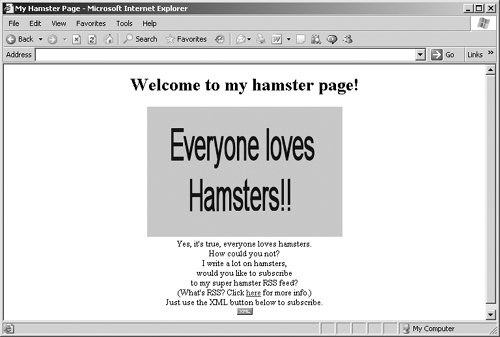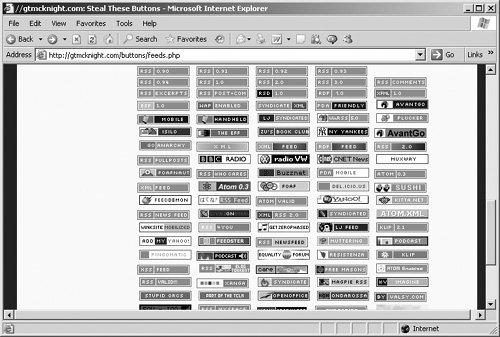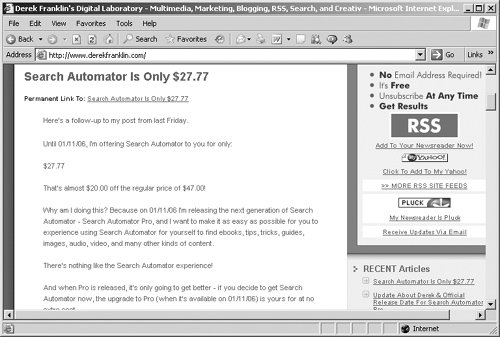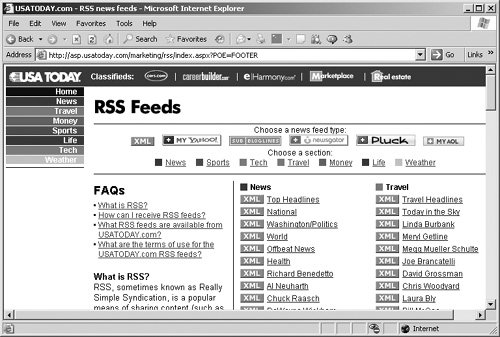Using the XML Button
| Probably the most basic and usual way to get your feed noticed is to add an XML or RSS button to your Web page. That's the way hundreds of thousands of RSS feeds get noticed and subscribed to. Here's the setup for a page on hamsters and their benefits, including an XML button to an RSS feed on hamsters: <html> <head> <title>My Hamster Page</title> </head> <body> <center> <h1>Welcome to my hamster page!</h1> <img src="/books/1/255/1/html/2/hamster.jpg"> <br> Yes, it's true, everyone loves hamsters. <br> How could you not? <br> I write a lot on hamsters, <br> would you like to subscribe <br> to my super hamster RSS feed? <br> (What's RSS? Click <a href="http://en.wikipedia.org/wiki/Rss"> here</a> for more info.) <br> Just use the XML button below to subscribe. <br> <a href="http://rssmaniac.com/hamster.xml"> <img src="/books/1/255/1/html/2/xml.gif" height="11" width="24" border = "0"></a> </center> </body> </html> The XML button appears in a browser, ready for readers to subscribe to your feed (Figure 8.1). Figure 8.1. Here's the hamster page, complete with XML button. When you add a subscription button to your Web page, keep in mind that these days, the XML button is the most popular. If you're targeting a specific version of RSS, such as 2.0, by all means use an RSS 2.0 button. In general it's a good idea to include links with your feed. For the newbies among your readers, it's helpful to have a link to the Wikipedia page that explains what RSS is (that page also includes links showing where to get RSS readers). A link can catch all the hamster lovers who have no idea what RSS is. In fact, you might consider adding a page of instructions that tell your readers how to use the XML button to subscribe to your feed, a list of links to the RSS readers you prefer, and so on. You can use the standard XML button, or you can get creative and use one of the many RSS buttons available on the Internet. A good site for finding feed buttons is http://gtmcknight.com/buttons/feeds.php (Figure 8.2). Figure 8.2. Choose from a wide array of RSS feed buttons. You're not limited to the standard buttons, of course. For example, the site www.derekfranklin.com uses a really big RSS button (Figure 8.3). Figure 8.3. This site sports a jumbo-size RSS feed button. If you plan to have many RSS feeds, make sure you label each one, as you see at www.usatoday.com (Figure 8.4). Figure 8.4. USAToday.com uses color coding as well as text to label its RSS feed buttons. Now that you've added the XML button to your Web page, it's time to draw readers in. |